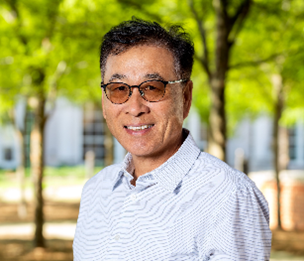News Story
More Salt, More Power: UMD, ARL Researchers Building Better Batteries
College Park, Md. — A team of researchers at the University of Maryland (UMD), U.S. Army Research Laboratory (ARL), and colleagues have developed a battery that is at once safer, cheaper, more environmentally friendly, and more powerful—by adding a pinch of salt.
Advancing UMD research on groundbreaking “water-in-salt” lithium ion battery technology, the researchers found that adding a second salt to the water-based (aqueous) batteries increased their energy capacity, but without the fire risk, poisonous chemicals, and environmental hazards of lithium ion batteries that dominate the portable electronics market.
“Our purpose was to invent an aqueous lithium ion battery that is absolutely safe, green, and cost-efficient, while delivering energy density comparable to commercial lithium ion batteries,” said Liumin Suo, postdoctoral research associate in UMD’s Department of Chemical and Biomolecular Engineering. “We believe our batteries will have very wide applications including electric energy storage, airspace devices, and portable electric devices.”
A peer-reviewed paper based on the study was published recently in the journal Angewandte Chemie as a Very Important paper (VIP).
The team of researchers—led by Chunsheng Wang, professor in UMD’s Department of Chemical & Biomolecular Engineering, and Kang Xu, senior research chemist and fellow at ARL—said their work demonstrates a major advance in water-based batteries by further increasing the voltage, or power, of an aqueous battery.
“Our invention has the potential to transform the energy industry by replacing flammable, toxic lithium ion batteries with our safe, green water-in-salt battery,” said Wang. “This technology may increase the acceptance and improve the utility of battery-powered electric vehicles, and enable large-scale energy storage of intermittent energy generators like solar and wind.”
The researchers said their technology holds great promise, particularly in applications that involve large energies at kilowatt or megawatt levels and in applications where battery safety and toxicity are primary concerns, including non-flammable batteries for airplanes, naval vessels, or spaceships.
“All this leads to a safe lithium ion technology that is free of any fire and explosion hazard, benefiting both the soldier and the civilian,” said Arthur Cresce, an author on the paper and research chemist with ARL. “For instance, energy storage units of the electrical microgrids, which would manage energy produced and harvested in camp, could rely on a WiSE-based battery bank to store and release electricity without the safety and environmental concerns, increasing the camp's self-reliant energy capability.”
“The water-in-salt electrolytes developed by this group have unexpectedly opened the possibility of high-voltage aqueous electrochemical systems, impervious to water splitting reactions. The new water-in-bisalt electrolytes, incorporating two or more lithium salts, may soon lead to safer, cheaper, and longer lasting water-based lithium-ion batteries,” said Massachusetts Institute of Technology (MIT) Professor Martin Bazant, a leading battery researcher who was not involved in the study.
At UMD’s 2016 Celebration of Innovation and Partnerships on May 9, Wang, Xu, Suo, and the rest of their research team won Invention of the Year: Physical Sciences for their groundbreaking “water-in-salt” aqueous lithium ion battery technology.
This work was supported by DOE ARPA-E (DEAR0000389), the Maryland NanoCenter and its Nisp Lab and SAC Lab, and ARL Enterprise for Multiscale Research of Materials.
The research paper, “Advanced High-Voltage Aqueous Lithium-Ion Battery Enabled by ‘Water-in-Bisalt’ Electrolyte,” Liumin Suo, Oleg Borodin, Wei Sun, Xiulin Fan, et al., was published online April 27 in the journal Angewandte Chemie.
The A. James Clark School of Engineering at the University of Maryland serves as the catalyst for high-quality research, innovation, and learning, delivering on a promise that all graduates will leave ready to impact the Grand Challenges (energy, environment, security, and human health) of the 21st century. The Clark School is dedicated to leading and transforming the engineering discipline and profession, to accelerating entrepreneurship, and to transforming research and learning activities into new innovations that benefit millions.
Visit us online at www.eng.umd.edu and follow us on Twitter @ClarkSchool.
Published May 11, 2016









